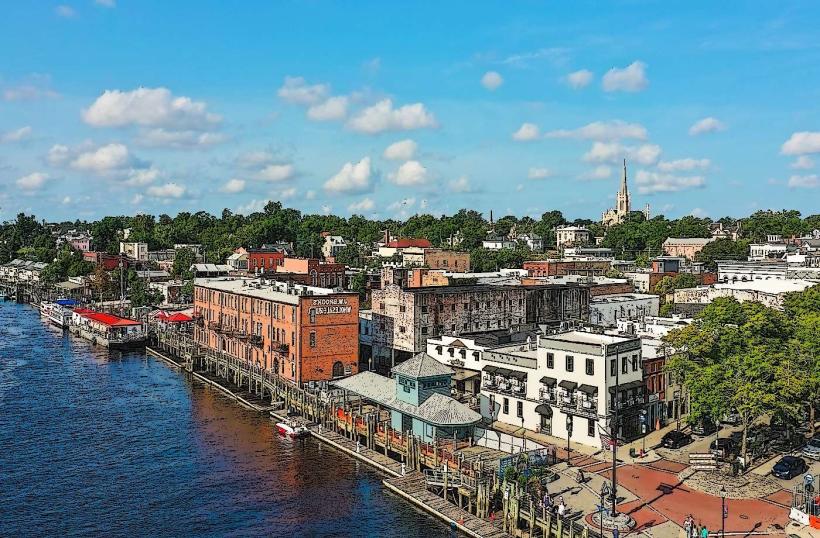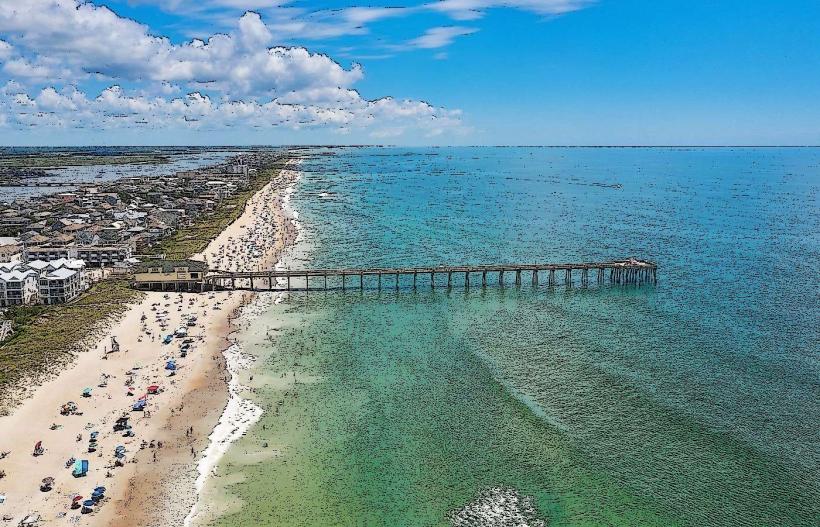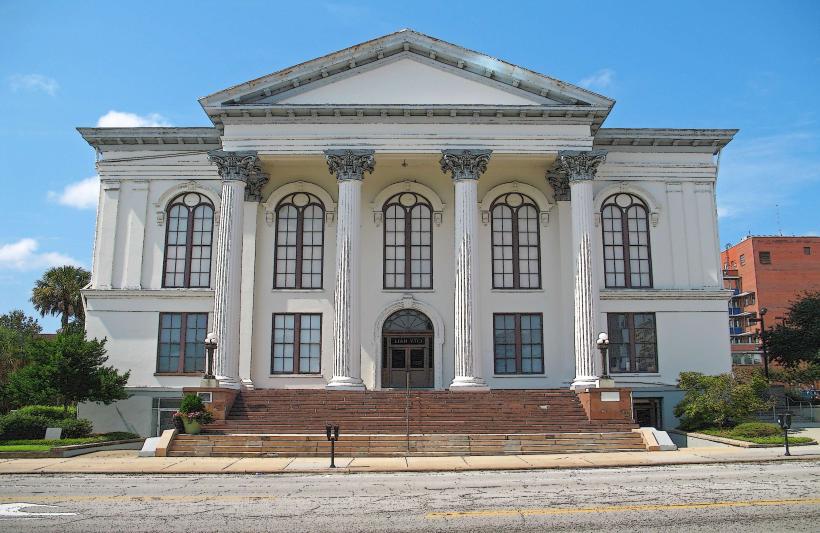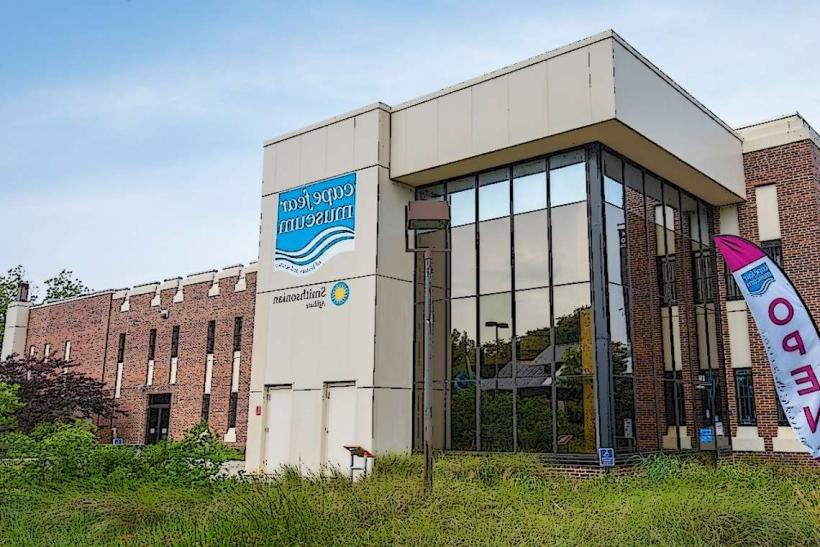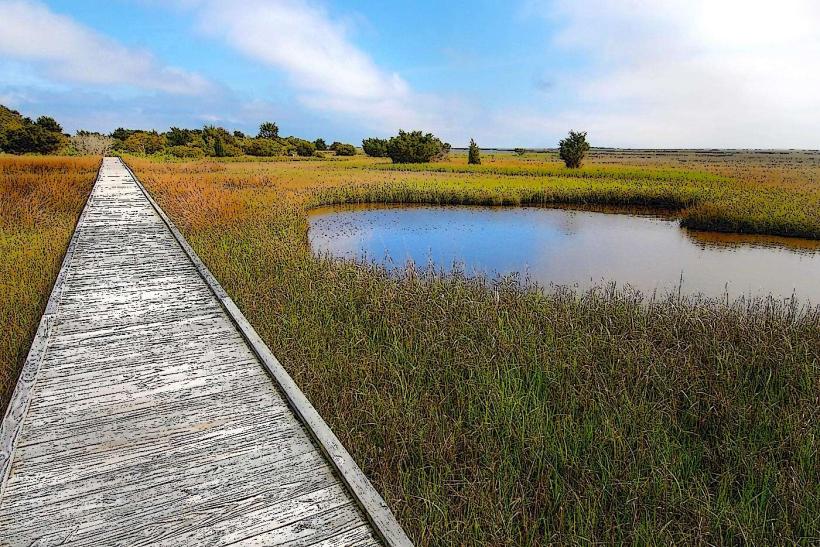Information
City: WilmingtonCountry: USA North Carolina
Continent: North America
Wilmington, USA North Carolina, North America
Overview
Wilmington, North Carolina, sits in the state’s southeast, where the Cape Fear River meets the salty breeze of the Atlantic coast.It’s the county seat of New Hanover County and a lively hub where the region’s business, arts, and weekend festivals all come together.In Wilmington, you get a lively city scene, the easy charm of the riverfront, and beaches just a short drive away where you can hear gulls calling over the waves.Wilmington spans about 45 square miles, stretching from its mainland streets to the sandy barrier islands just offshore.The city sits only a few feet above sea level, its scenery stretching from quiet riverfronts and marshy wetlands to sandy shores at Wrightsville, Carolina, and Kure Beach.The climate falls into the humid subtropical category, bringing sticky, warm summers and winters that stay mild.In summer, the heat often climbs into the upper 80s or low 90s Fahrenheit (about 30–33°C), and the thick, damp air can feel like a warm blanket around you.Winters stay mild, with afternoons often warming to the mid-60s and crisp mornings hovering in the mid-40s Fahrenheit (7–18°C).Wilmington gets plenty of rain, especially in the sticky summer months, and now and then a tropical storm or hurricane sweeps in from the coast.Wilmington has about 130,000 residents, and when you count the nearby towns and counties in its metro area, that number climbs past 300,000-enough to fill a stadium more than three times over.The city’s home to a vibrant mix-neighbors who’ve lived here for decades, retirees enjoying slow mornings by the water, ambitious young professionals, and newcomers drawn to the salty air and steady jobs by the coast.Wilmington’s population spans a mix of ethnicities and cultures, from the aroma of Caribbean food along Market Street to the sound of church bells on Sunday morning.A booming economy and a vibrant way of life keep pulling people in, from bustling coastal towns to far-off countries.Wilmington’s economy thrives on a mix of industries, from the bustle of its busy port and maritime trades to tourism, film and TV production, education, healthcare, and manufacturing.With cobblestone streets in its historic downtown and sandy beaches just minutes away, the city draws crowds year-round, keeping its hotels, shops, and cafés bustling.The Port of Wilmington powers the local economy, ranking among the East Coast’s fastest-growing container ports, where cranes swing over stacks of bright steel boxes.It drives global trade forward and keeps logistics and distribution humming, from cargo ships crossing oceans to trucks rolling into warehouses.Wilmington has built a strong foothold in film and television, earning the nickname “Hollywood East.” Studios buzz with activity, drawing filmmakers and media pros from all over.Education and healthcare offer steady jobs, with places like the University of North Carolina Wilmington shaping the workforce and driving research that hums through its busy labs.In Wilmington, cobblestone streets wind through historic districts, giving way to sleek office towers and quiet residential blocks.Downtown boasts preserved brick façades, shady riverfront parks, and a lively cultural scene, all tied together by pedestrian-friendly streets and welcoming community spaces.Highways twist out of the city, crossing wide bridges that tie it to nearby towns and the salty coast.Wilmington International Airport offers commercial flights across the U. S. and a handful of overseas destinations, with departures that range from bustling morning runs to quieter evening hops.Most people get around on buses, and the city’s still working to make transit easier to reach and better connected-adding stops, fixing sidewalks, even painting clearer route signs.Because the city sits on the coast, infrastructure planning zeroes in on resilience-making sure streets stay passable when heavy rain barrels in or storm tides push against the seawall.In Wilmington, education shapes the community and drives the economy, from bustling classrooms to research labs humming late into the night.UNC Wilmington is a leading school with programs from undergrad to graduate, known for its standout work in marine biology, business, and the arts-you can almost smell the salt air from its coastal labs.Public and private schools across the city serve a rising number of students, focusing on strong academics and a wide range of activities-from debate teams to soccer under the bright stadium lights.UNCW plays an active role in regional research projects and builds strong ties with local partners, from coastal studies to neighborhood outreach.In Wilmington, culture thrives-shaped by its storied past, salty ocean air, and the mix of people who call it home.The city backs theaters, art galleries, music halls, and lively festivals that showcase both local traditions and modern creativity, from folk dances in the square to cutting-edge art exhibits.Fresh seafood takes center stage here, with coastal flavors that taste like they came straight off the boat, and you’ll also find plenty of international and modern spots to keep things exciting.Local markets bustle with fresh apples and handmade breads, while food festivals showcase the region’s flavors and time‑honored recipes.The community stays involved, with local groups working to preserve historic buildings, protect the riverbanks, and provide vital social services.Wilmington embraces inclusivity, offering residents everything from weekend art workshops to lively neighborhood sports leagues.In Wilmington, healthcare ranges from busy hospitals to quiet specialty clinics and wellness centers, serving neighbors down the street and communities miles away.The city’s built a healthcare network that handles check‑ups, advanced treatments, and urgent care-right down to the wail of an ambulance racing through downtown.Public services work to keep people safe, streets clean, roads in good repair, and neighborhoods thriving.Perched on the coast, Wilmington puts money into disaster readiness, flood control, and projects that protect its environment, from sturdy sea walls to cleaner waterways.In Wilmington, life flows with the rhythm of the coast, offering plenty of ways to get outside-whether it’s kayaking along calm waterways or strolling barefoot on sandy beaches.Locals and tourists flock to the Atlantic coast and Cape Fear River for beaches, boating, fishing, kayaking, and all kinds of water sports, from paddling in the morning sun to casting a line at dusk.The city’s dotted with parks, winding greenways, and recreation spots where you can shoot hoops, hike shaded trails, or picnic with the kids.In Wilmington, you’ll find streets lined with century-old brick homes and oak trees, as well as fresh, modern neighborhoods built with families and professionals in mind.With the ocean on one side and the river on the other, the city blends its cultural gems into a setting where work flows, weekends feel alive, and neighbors come together over coffee or music.Wilmington sits on the coast, thriving thanks to its prime location, a mix of industries, and a lively cultural scene that might greet you with the scent of fresh seafood drifting from the docks.With its cobblestone streets, sparkling waterfront, and steady modern growth, the city draws residents, businesses, and visitors alike.Wilmington, perched on North Carolina’s southeastern coast, continues to grow into a resilient, lively city, driven by its deep commitment to education, healthcare, and protecting the green marshes that frame its shores.
Landmarks in wilmington


